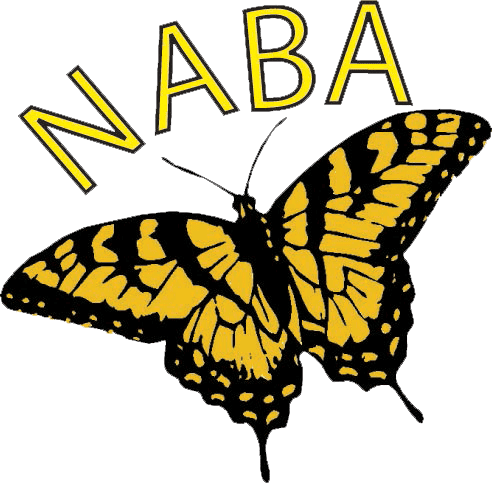Pipevine and the Pipe-dream Project
Citizen Science in Action
Pipevine had its gardening heyday over 100 years ago when victorian porches and arbors were standard features of the house and garden. At that time pipevine was chosen for the thick canopy of leaves that would be produced in one season. An entire porch could be turned into a private shady retreat, perfect for the pre-airconditioned era.
Although the vine covered homes of Victorian times are no longer de rigueur, there is still a valuable place for pipevine in the garden in general and the butterfly garden in particular. In the garden, pipevine plants provides a lush, tropical, vertical accent that will tolerate shade and requires little maintenance.
In the butterfly garden, pipevine is the sole food for the Pipevine Swallowtail. Although the Pipevine Swallowtail is not listed as a rare butterfly, native stands of pipevine are becoming less and less common. There are many locations where the local pipevine population has dropped so low that the Pipevine Swallowtail is no longer sighted. Increasing plantings of the only food that will support Pipevine Swallowtail caterpillars can only help to preserve and perhaps help increase this beautiful butterfly. The goal of the pipe-dream project is to encourage butterfly gardeners to plant pipevine and help the Pipevine Swallowtail preserve and perhaps extend its range.
You may find pipevines for sale that have large, showy flowers and while these can be quite spectacular, they are not the native varieties and they will not be hardy in most climates throughout the United States.
The Pipevine Swallowtail has a range that includes large sections of the United States yet it can be both elusive and common in butterfly gardens, depending on who you talk to. Some gardeners plant the host plant, pipevine, and the Pipevine Swallowtail appears like magic. Other gardeners wait for quite some time before their efforts are rewarded.
While there are no guarantees that planting pipevine will fill your garden with large iridescent black butterflies, patience seems to pay off for most gardeners and your reward might be an established colony of swallowtails that live and reproduce in your garden.

The three articles reproduced below from American Butterflies and Butterfly Gardener provide an introduction to the pipevine plant and Pipevine Swallowtail butterfly.
The Pipe-dream Project
(Pipe-dreams are “fanciful or unrealistic hope or plans.” We hope to show that even pipe-dreams can come true!)
By Jeff Glassberg
The following article originally appeared in American Butterflies (Vol 9: No.2, Summer 2001).The names of plant species are even less uniform than are butterfly names. In this article, the author has chosen to call all species in the genus Aristolochia, pipevines. Plant books apply the same name – Dutchman’s pipe – to many species and may use different group names, such as calling A. serpentaria Virginia Snakeroot.
Pipevine Swallowtails, with brilliant blue flashing wings, inhabit much of the United States, although in many areas they are quite scarce… read more

Life Styles of the Scaled and Beautiful: Pipevine Swallowtail
By Jim Brock
The following article originally appeared in American Butterflies (Vol 9: No.1, Spring 2001).
Okay, let’s be honest out there. How many of you occasionally make some neat butterfly discovery while not actually intending to be out butterflying? You know. You’re out shopping, on an errand, or picking up the kids at school and you stumble upon something new, whether it’s butterfly flowers in someone’s yard, a colony of host plants you didn’t know existed or you even run across some rare, stray adult butterfly of some kind or another. I know it happens … read more

Caterpillar Food Plant: Aristolochia
By Lenora Larson
The following article originally appeared in Butterfly Gardener (Vol 11, Issue 4, Winter 2006).
Gardeners are continually beset by difficult choices of the “you can’t have your cake and eat it too” variety. Some of these mutually exclusive choices are fairly benign: “Should I cut that flower for a bouquet, or leave it to glory the garden?” Others are more momentous: “Should I leave that tree, or cut it to create a sunny butterfly garden?” And some are gut-wrenching: Should I leave the Pipevine Swallowtail caterpillars or rescue the delicate baby vine?”…read more


